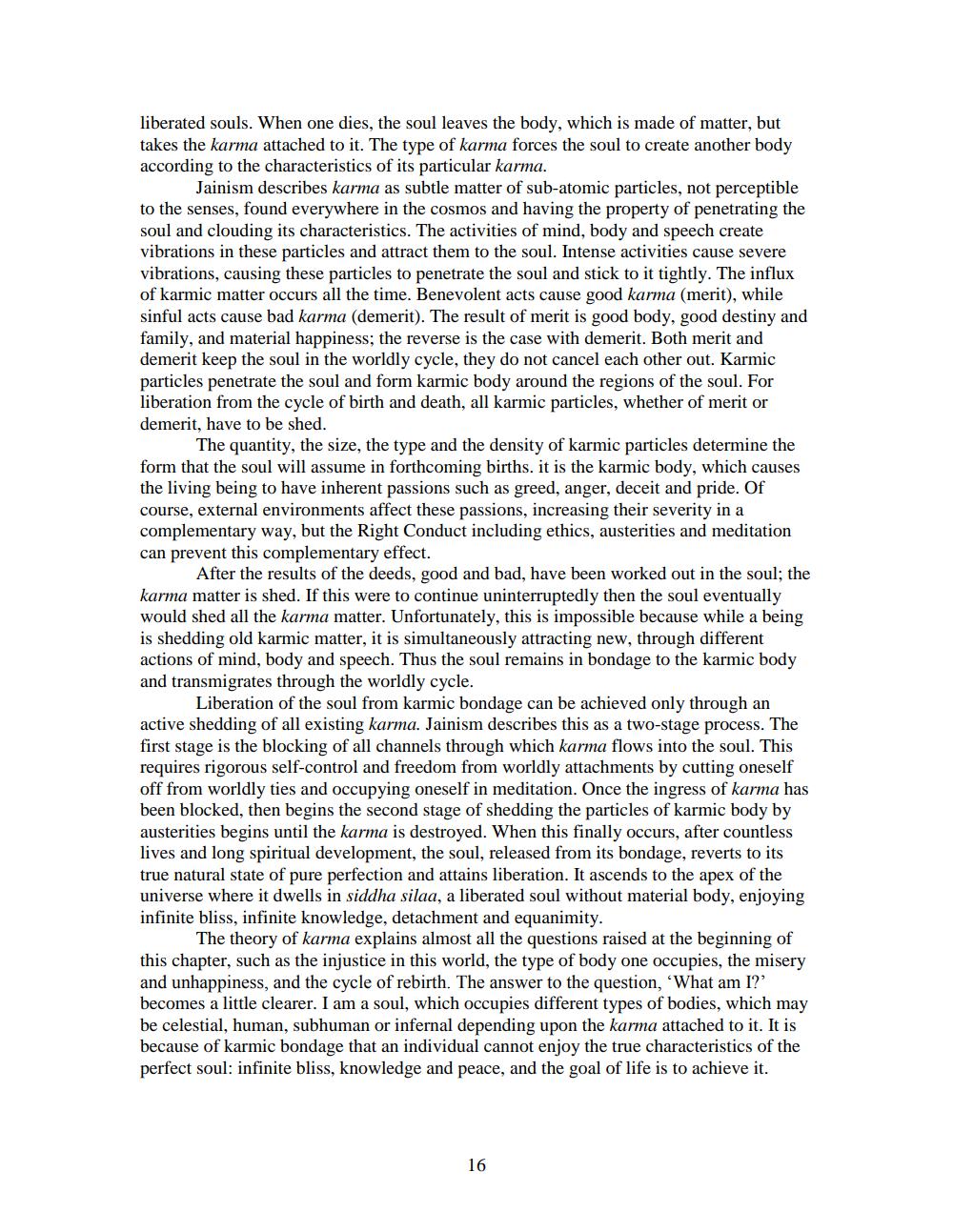________________
liberated souls. When one dies, the soul leaves the body, which is made of matter, but takes the karma attached to it. The type of karma forces the soul to create another body according to the characteristics of its particular karma.
Jainism describes karma as subtle matter of sub-atomic particles, not perceptible to the senses, found everywhere in the cosmos and having the property of penetrating the soul and clouding its characteristics. The activities of mind, body and speech create vibrations in these particles and attract them to the soul. Intense activities cause severe vibrations, causing these particles to penetrate the soul and stick to it tightly. The influx of karmic matter occurs all the time. Benevolent acts cause good karma (merit), while sinful acts cause bad karma (demerit). The result of merit is good body, good destiny and family, and material happiness; the reverse is the case with demerit. Both merit and demerit keep the soul in the worldly cycle, they do not cancel each other out. Karmic particles penetrate the soul and form karmic body around the regions of the soul. For liberation from the cycle of birth and death, all karmic particles, whether of merit or demerit, have to be shed.
The quantity, the size, the type and the density of karmic particles determine the form that the soul will assume in forthcoming births, it is the karmic body, which causes the living being to have inherent passions such as greed, anger, deceit and pride. Of course, external environments affect these passions, increasing their severity in a complementary way, but the Right Conduct including ethics, austerities and meditation can prevent this complementary effect.
After the results of the deeds, good and bad, have been worked out in the soul; the karma matter is shed. If this were to continue uninterruptedly then the soul eventually would shed all the karma matter. Unfortunately, this is impossible because while a being is shedding old karmic matter, it is simultaneously attracting new, through different actions of mind, body and speech. Thus the soul remains in bondage to the karmic body and transmigrates through the worldly cycle.
Liberation of the soul from karmic bondage can be achieved only through an active shedding of all existing karma. Jainism describes this as a two-stage process. The first stage is the blocking of all channels through which karma flows into the soul. This requires rigorous self-control and freedom from worldly attachments by cutting oneself off from worldly ties and occupying oneself in meditation. Once the ingress of karma has been blocked, then begins the second stage of shedding the particles of karmic body by austerities begins until the karma is destroyed. When this finally occurs, after countless lives and long spiritual development, the soul, released from its bondage, reverts to its true natural state of pure perfection and attains liberation. It ascends to the apex of the universe where it dwells in siddha silaa, a liberated soul without material body, enjoying infinite bliss, infinite knowledge, detachment and equanimity.
The theory of karma explains almost all the questions raised at the beginning of this chapter, such as the injustice in this world, the type of body one occupies, the misery and unhappiness, and the cycle of rebirth. The answer to the question, 'What am I? becomes a little clearer. I am a soul, which occupies different types of bodies, which may be celestial, human, subhuman or infernal depending upon the karma attached to it. It is because of karmic bondage that an individual cannot enjoy the true characteristics of the perfect soul: infinite bliss, knowledge and peace, and the goal of life is to achieve it.
16




